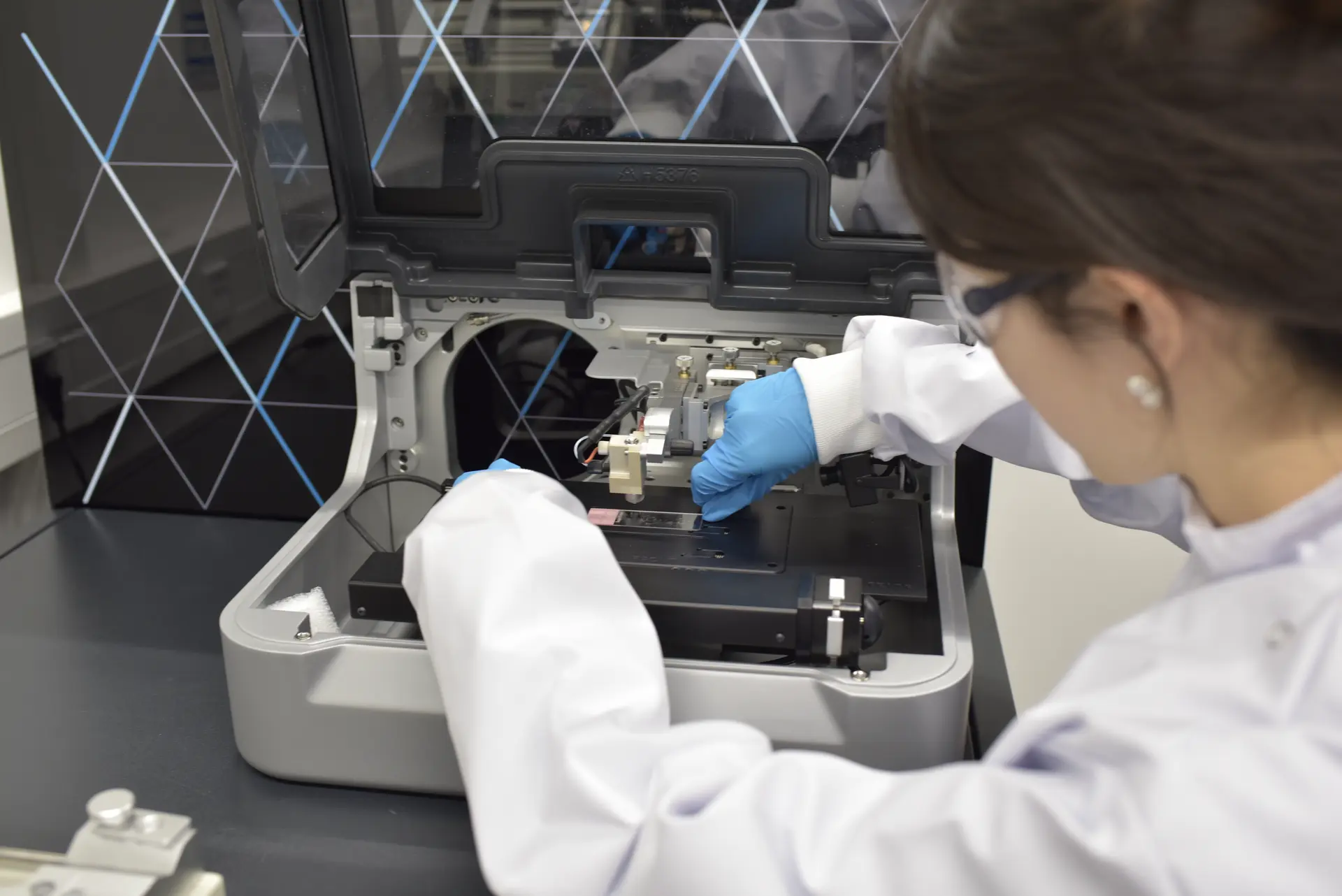Reviewed by Lexie CornerMay 7 2025
Speed and reliability are critical in disease diagnosis. Researchers at the Technical University of Munich (TUM) and Imperial College London have developed a new method for identifying bacteria in just a few minutes, dramatically reducing the waiting time from several days.
 First author Wei Chen loads the mass spectrometer with a sample. Image Credit: Robert Reich / University of Munich
First author Wei Chen loads the mass spectrometer with a sample. Image Credit: Robert Reich / University of Munich
Traditionally, diagnosing bacterial infections requires isolating pathogens and cultivating bacterial cultures - a process that often takes several days before treatment can begin.
Led by Nicole Strittmatter, Professor of Analytical Chemistry at TUM, and Dr. James S. McKenzie from Imperial College London, the research team developed a faster approach using mass spectrometry. This technique enables the direct detection of bacterial metabolic products in tissue and stool samples.
The method relies on a reference database containing 232 medically relevant bacterial species and their associated metabolic markers. These biomarkers allow for the rapid identification of specific pathogens.
The technique can detect bacteria linked to serious conditions such as stomach cancer, pneumonia, meningitis, premature birth, gonorrhea, and sepsis.
Further Expanding the Bacterial Database
Our innovative approach is not to look directly for the pathogenic bacteria, but only for their metabolic products. This allows us to detect them indirectly, but much more quickly."
Wei Chen, PhD Student, Department of Bioscience, School of Natural Sciences, University of Munich
Nicole Strittmatter sees strong potential for this method in personalized medicine, where treatments are tailored to individual patients.“This is one of the most important future topics in biotechnology and medicine. Targeted interventions can dramatically improve the chances of successful treatment. As analysts, we develop modern tools and methods for doctors to do this.”
To enable wider clinical use, the team notes that the biomarker database must be expanded. While the current system includes 232 bacterial species, more than 1,400 are known and documented, each with unique metabolic signatures that must be identified and added.
Source:
Journal reference:
Chen, W., et al. (2025) Universal, untargeted detection of bacteria in tissues using metabolomics workflows. Nature Communications. doi.org/10.1038/s41467-024-55457-7.